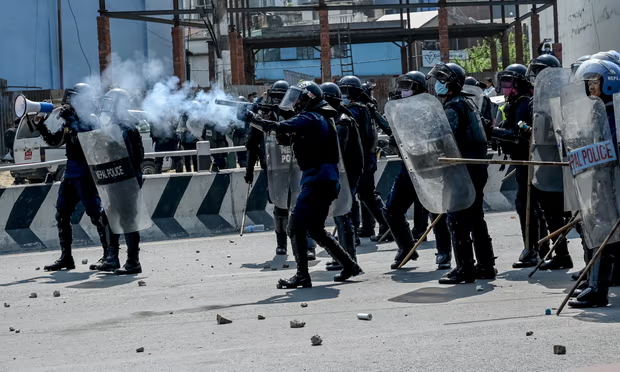
Nepal has once again found itself at the center of a heated political debate following recent protests by royalists demanding the restoration of the monarchy and the declaration of Nepal as a Hindu state. What started as peaceful demonstrations quickly escalated into violent clashes with security forces, resulting in casualties, injuries, and significant political turmoil. The recent events raise crucial questions about Nepal’s governance and the path it should take in the future.
The Roots of the Protests
Nepal abolished its 240-year-old monarchy in 2008, transitioning into a federal democratic republic. However, political instability, frequent government changes, and rising public dissatisfaction have led to growing nostalgia for the monarchy. Many believe that the republican system has failed to address corruption, economic instability, and governance inefficiencies, prompting demands for the return of a system that some view as more stable.
The Protests and Their Escalation
Thousands of royalist supporters took to the streets, voicing their demand for the reinstatement of former King Gyanendra Shah. While the initial demonstrations were peaceful, they soon turned violent as protesters clashed with police. Tear gas, water cannons, and curfews were imposed to control the situation. The unrest resulted in at least two deaths and over 100 injuries, including security personnel. Additionally, public and private properties were damaged, leading to more than 100 arrests.
Political and Social Impact
The protests have deepened divisions in Nepal’s political landscape. The ruling parties, including the Nepali Congress and the Communist Party of Nepal, have strongly opposed any move to reinstate the monarchy. Some leaders have even called for legal action against former King Gyanendra for allegedly encouraging the protests. On the other hand, the Rastriya Prajatantra Party (RPP), a pro-monarchy political faction, has vowed to continue the movement.
Socially, the unrest has ignited a broader debate about Nepal’s identity and governance. While some citizens support the idea of a Hindu state and monarchy, others argue that Nepal should focus on strengthening its democracy rather than reverting to an old system. The protests have also exposed the dissatisfaction many people feel toward the current political establishment.
Economic Consequences
Beyond politics, the protests have economic implications. Business activities in affected areas were disrupted, leading to losses for local enterprises. Investors are likely to become wary of Nepal’s stability, which could impact economic growth and employment opportunities. If political uncertainty continues, it may further discourage both domestic and foreign investment.
The Way Forward
Nepal stands at a crossroads. Should it continue as a republic and work toward fixing the flaws in its democratic system, or should it reconsider monarchy as a solution to ongoing instability? While the protests reflect genuine frustrations, the solution lies not in going back to the past but in creating a stronger, more accountable government that addresses public concerns.
The focus should be on political reform, economic stability, and good governance. The government must address the dissatisfaction that fuels such movements by improving transparency, reducing corruption, and ensuring efficient service delivery. Meanwhile, dialogue with all political factions, including royalist groups, could help create a more inclusive approach to governance.
Conclusion
The recent royalist protests in Nepal have exposed deep-seated discontent and divisions in society. Whether Nepal moves forward with a democratic system or takes a different route, one thing is clear—without genuine political and economic reforms, unrest and dissatisfaction will continue. The country’s future depends on how its leaders respond to these challenges and whether they can provide a vision that unites rather than divides the people.
As Nepal navigates this crucial period, the question remains: will it strengthen its democracy, or will the call for monarchy grow louder
